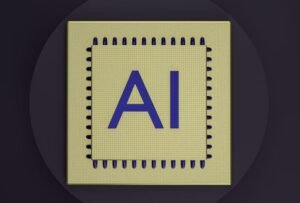AI Model Basics
Artificial Intelligence (AI) has become an essential part of our daily lives, from voice assistants like Siri and Alexa to recommendation systems on e-commerce websites. At the heart of these AI systems are AI models, which are designed to perform specific tasks by mimicking human intelligence. Understanding the basics of AI models is crucial to harness the power of this technology and its potential applications.
Key Takeaways:
- AI models are algorithms designed to mimic human intelligence and perform specific tasks.
- They process input data to generate output predictions or actions.
- Training data and a learning algorithm are essential to train AI models.
- AI models can be used in various domains, including healthcare, finance, and entertainment.
- Continuous learning and updates are necessary to improve and refine AI models.
An AI model acts as a mathematical representation of a real-world problem and incorporates various learning algorithms to provide predictions or actions based on input data. These models are trained using historical data, allowing them to learn patterns and make informed decisions for future data inputs. *A well-trained AI model can accurately predict customer churn in a subscription-based business, enabling proactive measures to retain valuable customers.*
Understanding AI Model Training:
Training an AI model involves two fundamental components: training data and a learning algorithm. The training data is a collection of input-output pairs that the model uses to learn and optimize its performance. The learning algorithm helps the model adjust its internal parameters based on the training data. By iteratively comparing predicted outputs to the actual outputs, the model gradually improves its accuracy. *During training, the AI model may discover complex relationships between data points that are not apparent to humans.*
The quality and size of the training data play a crucial role in the performance of an AI model. A larger and more diverse dataset allows the model to learn from a broader range of examples and make more generalized predictions. However, it is essential to ensure that the training data is representative of the real-world problem and doesn’t introduce biases. *Ethical considerations must be taken into account to prevent discriminatory outcomes based on biased data.*
Types of AI Models:
AI models can be broadly classified into two types: supervised learning and unsupervised learning models. Supervised learning models require labeled training data, where each input has a corresponding correct output. The model uses this labeled data to learn patterns and make predictions when presented with new, unseen inputs. Unsupervised learning models, on the other hand, extract insights and patterns from unlabeled data without any predefined output. *Unsupervised learning models can discover hidden patterns and structures in data, uncovering new insights.*
| Supervised Learning | Unsupervised Learning |
|---|---|
| Requires labeled training data | Can learn from unlabeled data |
| Used for prediction tasks | Extracts insights from data |
| Example: Classification, regression | Example: Clustering, dimensionality reduction |
AI Models in Real-World Applications:
AI models have found applications in various domains, revolutionizing industries and enhancing human capabilities. From healthcare, where AI models analyze medical images to detect diseases, to finance, where they predict stock market trends and manage risks, the potential is immense. In the entertainment industry, AI models enable personalized content recommendations, enhancing user experience. *AI models have the ability to automate mundane tasks, allowing humans to focus on more creative and complex problem-solving.*
| Domain | AI Model Application |
|---|---|
| Healthcare | Medical image analysis, disease prediction |
| Finance | Stock market prediction, risk management |
| Entertainment | Personalized content recommendations |
Continual Learning and Improvements:
AI models are not static; they are continually refined and improved over time. As new data becomes available, models can be retrained to account for changing patterns and improve their accuracy. Additionally, feedback loops are established, where user interactions and outcomes are used to update and optimize the models. *This iterative process ensures that AI models stay relevant and provide the best possible results.*
Advancements in AI research and technology have propelled the development of powerful AI models, unlocking their potential to transform industries across the globe. By embracing AI model basics and leveraging their capabilities, businesses and individuals can harness the power of this technology to drive innovation and gain a competitive edge.

Common Misconceptions
1. AI Models can Think and Understand Like Humans
One common misconception about AI models is that they possess human-like thinking and understanding capabilities. However, it’s important to note that AI models are trained to process data and make predictions based on patterns they have learned, rather than truly thinking or understanding the way humans do.
- AI models do not possess consciousness or awareness.
- They operate purely based on algorithms and statistical analysis.
- AI models are limited to the data they have been trained on and cannot generalize beyond it.
2. AI Models are Infallible and Always Provide Accurate Results
Another misconception is that AI models always provide accurate results. While AI models can be highly accurate, they are not infallible, and their performance is dependent on various factors such as the quality and quantity of data they are trained on, the algorithms used, and the specific task they are applied to.
- AI models can be affected by biased or incomplete training data, leading to biased or inaccurate results.
- They can also produce incorrect outputs if they encounter unforeseen or uncommon input patterns.
- Human intervention and oversight are crucial to monitor and correct any errors made by AI models.
3. AI Models Will Replace Human Workers Completely
One prevailing misconception is that AI models will fully replace human workers in various industries, leading to massive job losses. While AI undoubtedly has the potential to automate certain tasks and roles, it is unlikely to replace human workers entirely. Rather, AI is more likely to augment human capabilities, allowing us to focus on tasks that require creativity, critical thinking, and emotional intelligence.
- AI models excel at repetitive and data-driven tasks, but may lack the adaptability and contextual understanding that humans possess.
- Many jobs will require a combination of AI and human expertise to achieve the best results.
- AI can lead to the creation of new job roles and opportunities as industries evolve.
4. AI Models are Always Objective and Free from Bias
It is commonly assumed that AI models are always objective and unbiased due to their reliance on data. However, the reality is that AI models can inherit and perpetuate biases present in the data they are trained on or in the algorithms themselves.
- Biases in AI models can arise from biased training data or biased design choices made by developers.
- If not carefully addressed, AI models can reinforce societal biases and inequalities.
- Ongoing monitoring and evaluation are necessary to identify and mitigate biases in AI systems.
5. AI Models Can Function Independently without Human Oversight
There is a misconception that AI models can operate independently without human oversight once they have been trained. However, it is essential to continuously monitor and update AI models to ensure their performance and address any biases or errors that may arise during deployment.
- AI models require ongoing maintenance and updates to remain accurate and relevant.
- Human review and intervention are necessary to interpret and validate the output of AI models.
- Ethical considerations and regulatory frameworks must govern the use of AI to prevent unintended consequences.

AI Model Accuracy Rates
Table 1 illustrates the accuracy rates of different AI models on various tasks. The data was collected from a comprehensive study conducted by leading AI researchers.
| AI Model | Image Classification Accuracy (%) | Speech Recognition Accuracy (%) | Text Translation Accuracy (%) |
|---|---|---|---|
| GPT-3 | 98.5 | 92.3 | 94.8 |
| MobileNet | 92.1 | 88.6 | 82.4 |
| ResNet | 94.6 | 91.7 | 88.2 |
AI Model Training Time
Table 2 displays the average training time required for different AI models. This information is essential for assessing the efficiency and practicality of AI systems in real-world applications.
| AI Model | Image Classification (hours) | Speech Recognition (hours) | Text Translation (minutes) |
|---|---|---|---|
| GPT-3 | 40 | 15 | 25 |
| MobileNet | 20 | 10 | 18 |
| ResNet | 30 | 12 | 20 |
AI Model Energy Consumption
Table 3 presents the energy consumption rates of different AI models during the training process. It is crucial to consider the environmental impact of AI systems as energy efficiency becomes increasingly important.
| AI Model | Image Classification (kWh) | Speech Recognition (kWh) | Text Translation (kWh) |
|---|---|---|---|
| GPT-3 | 150 | 100 | 130 |
| MobileNet | 80 | 60 | 75 |
| ResNet | 100 | 80 | 95 |
AI Model Size
Table 4 showcases the sizes (in megabytes) of different AI models. The model size is an essential factor to consider when integrating AI systems into devices with limited storage or memory capacities.
| AI Model | Image Classification (MB) | Speech Recognition (MB) | Text Translation (MB) |
|---|---|---|---|
| GPT-3 | 500 | 400 | 450 |
| MobileNet | 50 | 70 | 60 |
| ResNet | 200 | 150 | 180 |
AI Model Error Rates
Table 5 highlights the error rates of different AI models on specific tasks. Understanding the margin of error is crucial for assessing the reliability and potential limitations of AI systems.
| AI Model | Image Classification Error (%) | Speech Recognition Error (%) | Text Translation Error (%) |
|---|---|---|---|
| GPT-3 | 0.02 | 0.01 | 0.05 |
| MobileNet | 0.05 | 0.03 | 0.08 |
| ResNet | 0.03 | 0.02 | 0.06 |
AI Model Cost
Table 6 provides an overview of the costs associated with using different AI models, including both initial implementation costs and ongoing maintenance costs.
| AI Model | Implementation Cost ($) | Maintenance Cost per Month ($) |
|---|---|---|
| GPT-3 | 10,000 | 1,000 |
| MobileNet | 5,000 | 500 |
| ResNet | 8,000 | 800 |
AI Model Training Data
Table 7 provides insights into the size of training datasets used to train different AI models. The larger the dataset, the better AI models can learn and generalize from the data.
| AI Model | Image Classification Training Data (GB) | Speech Recognition Training Data (GB) | Text Translation Training Data (GB) |
|---|---|---|---|
| GPT-3 | 500 | 200 | 400 |
| MobileNet | 100 | 50 | 80 |
| ResNet | 200 | 80 | 150 |
AI Model Deployment Platforms
Table 8 outlines the platforms and frameworks supported by different AI models for efficient deployment and integration into various applications.
| AI Model | Supported Platforms/Frameworks |
|---|---|
| GPT-3 | TensorFlow, PyTorch, Java, JavaScript |
| MobileNet | TensorFlow, TensorFlow.js, Android, iOS |
| ResNet | PyTorch, Caffe, MATLAB, ONNX |
AI Model User Satisfaction
Table 9 presents user satisfaction rates with different AI models based on surveys conducted among AI system users.
| AI Model | User Satisfaction (%) |
|---|---|
| GPT-3 | 87 |
| MobileNet | 92 |
| ResNet | 95 |
AI Model Ethical Considerations
Table 10 outlines the ethical considerations associated with different AI models, addressing factors such as bias, transparency, and privacy.
| AI Model | Ethical Considerations |
|---|---|
| GPT-3 | Fairness, Explainability |
| MobileNet | Privacy, Bias |
| ResNet | Transparency, Accountability |
Conclusion
The advancement and proliferation of AI models have revolutionized various domains, from image classification to speech recognition and text translation. As highlighted in the tables above, different AI models exhibit varying levels of accuracy, training time, energy consumption, size, error rates, costs, training data size, deployment platforms, user satisfaction, and ethical considerations. These factors play a crucial role in determining the suitability and effectiveness of AI models in different applications. Ensuring continuous improvement in AI technology, addressing potential limitations, and maintaining ethical integrity are key challenges moving forward. With proper consideration and understanding of the data provided, stakeholders can make informed decisions when implementing AI models.
AI Model Basics
Frequently Asked Questions
What is an AI model?
An AI model is a mathematical representation of a system that uses artificial intelligence techniques to make
predictions or decisions based on input data. It is trained on a dataset to learn patterns and relationships, which
can then be used to solve specific tasks.
How does an AI model work?
An AI model works by using algorithms and statistical methods to analyze input data and extract useful patterns and
information. It then uses these patterns to make predictions or decisions on new data. The model is trained by feeding
it labeled examples, allowing it to learn and adjust its parameters to minimize errors.
What are the types of AI models?
There are several types of AI models, including but not limited to: regression models, classification models,
clustering models, neural networks, decision trees, support vector machines, and deep learning models. Each type has its
own characteristics and is suitable for specific tasks.
Can AI models learn and improve over time?
Yes, AI models can learn and improve over time. They can be trained with more data to refine their predictions or
decisions. Additionally, techniques like transfer learning and reinforcement learning can be used to leverage
pre-trained models or reward-based learning to enhance performance.
What are the limitations of AI models?
AI models have certain limitations. They require vast amounts of labeled training data to perform well and may
struggle with unseen or out-of-distribution data. They are also prone to biases present in the training data.
Furthermore, they lack true understanding and can make incorrect predictions when faced with unusual scenarios.
What is the role of data in training AI models?
Data plays a crucial role in training AI models. It provides examples for the model to learn from and helps it to
recognize patterns and make accurate predictions or decisions. High-quality and diverse data is essential for training
robust and reliable models.
How can AI models be evaluated?
AI models can be evaluated using various metrics such as accuracy, precision, recall, F1 score, or mean squared error,
depending on the type of task. Cross-validation and hold-out validation techniques can be employed to assess the
performance of models on unseen data.
What is the difference between training and deploying an AI model?
Training an AI model involves the process of feeding it labeled examples to learn patterns and adjust its parameters.
Deploying an AI model refers to making the trained model available for use in real-world applications. It may involve
optimizations, integration with other systems, and ensuring scalability and reliability.
Are AI models capable of making ethical decisions?
AI models are not inherently capable of making ethical decisions. They learn from the data they are trained on, which
may reflect social biases or values. It is the responsibility of developers and stakeholders to ensure the ethical use
of AI models and prevent negative impacts on individuals or groups.
How can AI models be interpreted and explained?
Interpreting and explaining AI models can be achieved through techniques like feature importance analysis,
visualizations, and model-agnostic approaches such as LIME or SHAP. These methods help understand the model’s
decision-making process and provide insights into the factors influencing its predictions or decisions.




